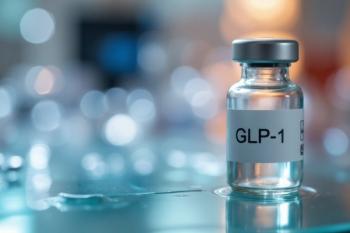
'Tune-up' Clinics Help Patients with Type 2 Diabetes
A study compares changes in medication regimen complexity in patients with uncontrolled T2D who were referred to a collaborative pharmacist-endocrinologist.
If glycemic control was easy, all of our patients who have type 2
Clinicians often struggle to find appropriate combinations of medications that can keep patients' blood sugars in an acceptable range. Ultimately, patients may need complicated or complex medication regimens. As medication regimen complexity increases, adherence, and clinical outcomes decrease.
Pharmacists from the Skaggs School of Pharmacy and Pharmaceutical Sciences at UC San Diego,La Jolla, CA have published a study that compares changes in medication regimen complexity in patients with uncontrolled T2D who were referred to a collaborative pharmacist-endocrinologist. Patients saw these teams in Diabetes Intense Medical Management (DIMM) clinics. The authors describe these clinics as delivering a 'tune up' model. They compared their outcomes to those of similar patients receiving usual primary care provider (PCP) care over 6 months.
This retrospective cohort study, published in the Annals of Pharmacotherapy, compared complex DIMM clinic patients to a similar group; these patients had hemoglobin A1c results exceeding 8%. The researchers enrolled 99 participants in the DIMM arm, and 56 in the PCP arm. On average, these patients had 12 to 13 medications in their regimens. Patients enrolled in the DIMM clinic also continued to see their PCPs.
At the DIMM, pharmacists worked on the care team to develop comprehensive care plans, and select or recommend therapy based on patient-specific needs. Pharmacists scheduled at least 1 visit that was an hour or longer to:
- determine exactly what patients need in terms of specific patient education and training
- evaluate adherence and patient understanding
- simplify regimens, and assess medication duplications, drug-drug/disease interactions, and adverse drug events
- empower and motivate the patient
Over the 6 month study period, the researchers were able to keep patients' medication regimen complexity stable. Patients tended to be on the same number of medications at the study's end as they were at the beginning. However, the change in hemoglobin A1c was significantly greater in the DIMM arm. These patients had an average reduction of 2.4%.
The researchers note that almost all health systems are challenged with higher treatment costs among patients with uncontrolled
Reference
Morello CM, Rotunno T, Khoan J, Hirsch JD. Improved Glycemic Control With Minimal Change in Medication Regimen Complexity in a Pharmacist-Endocrinologist Diabetes Intense Medical Management (DIMM) "Tune Up" Clinic. Ann Pharmacother. 2018 May 1:1060028018776663. doi: 10.1177/1060028018776663. [Epub ahead of print]
Newsletter
Stay informed on drug updates, treatment guidelines, and pharmacy practice trends—subscribe to Pharmacy Times for weekly clinical insights.














































































































































































































